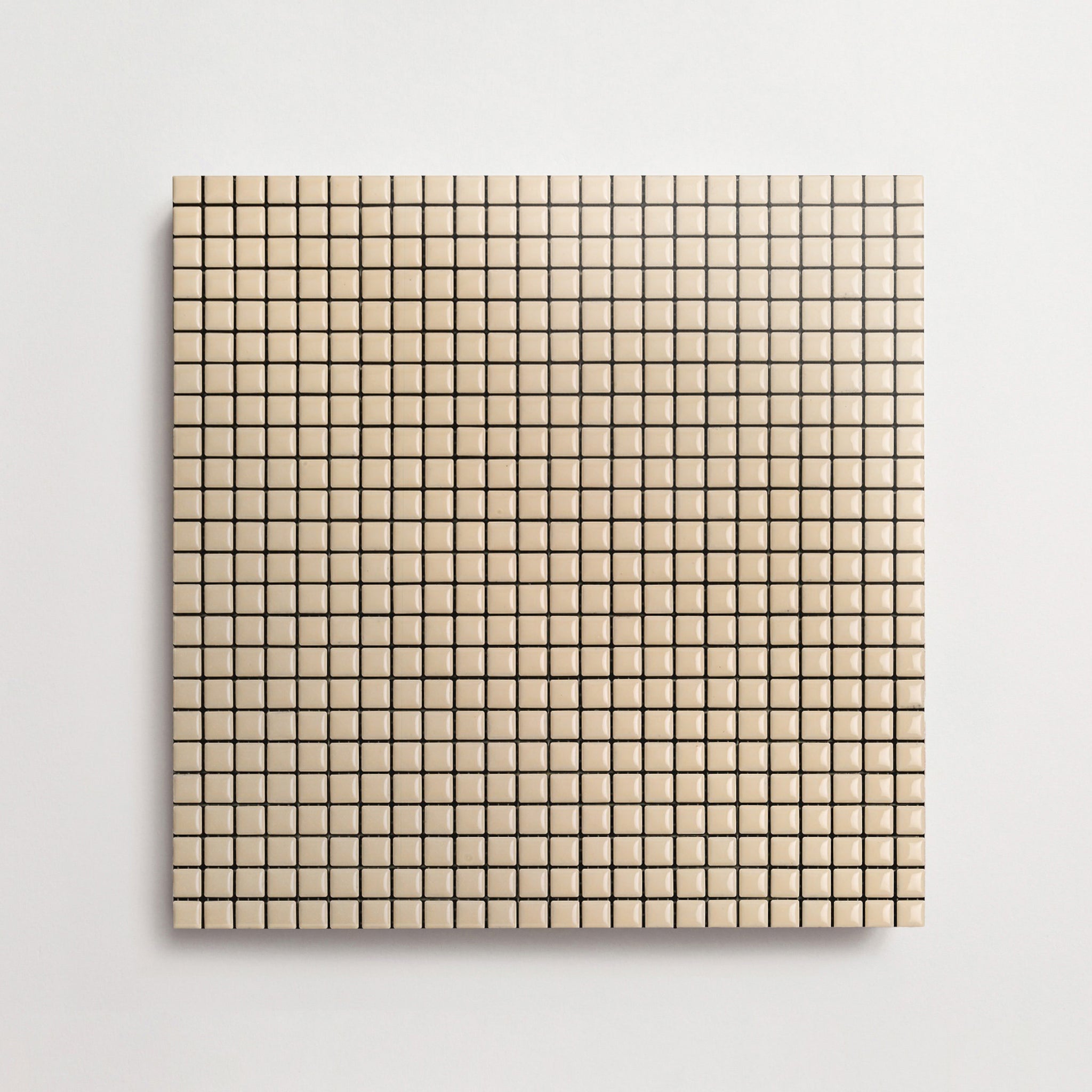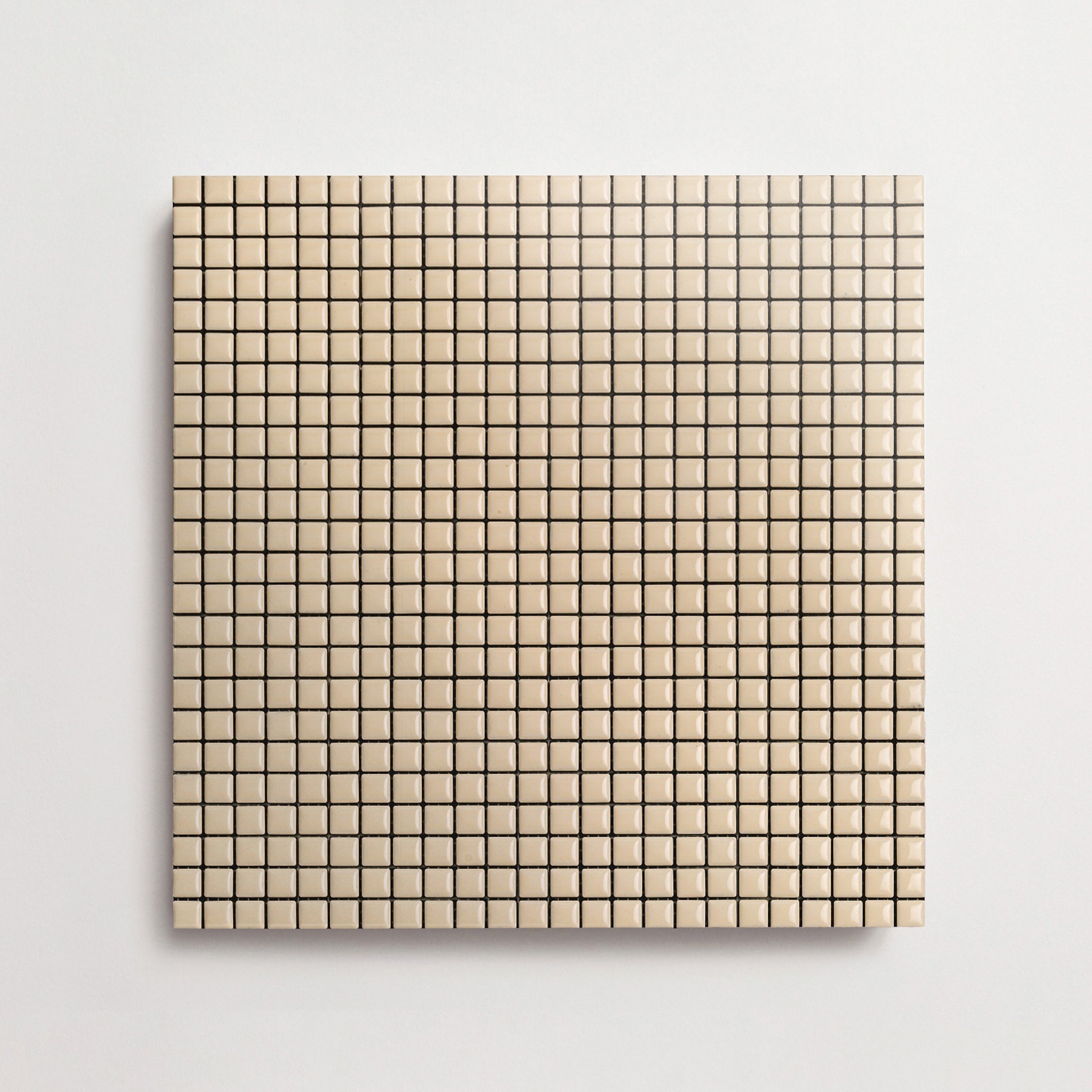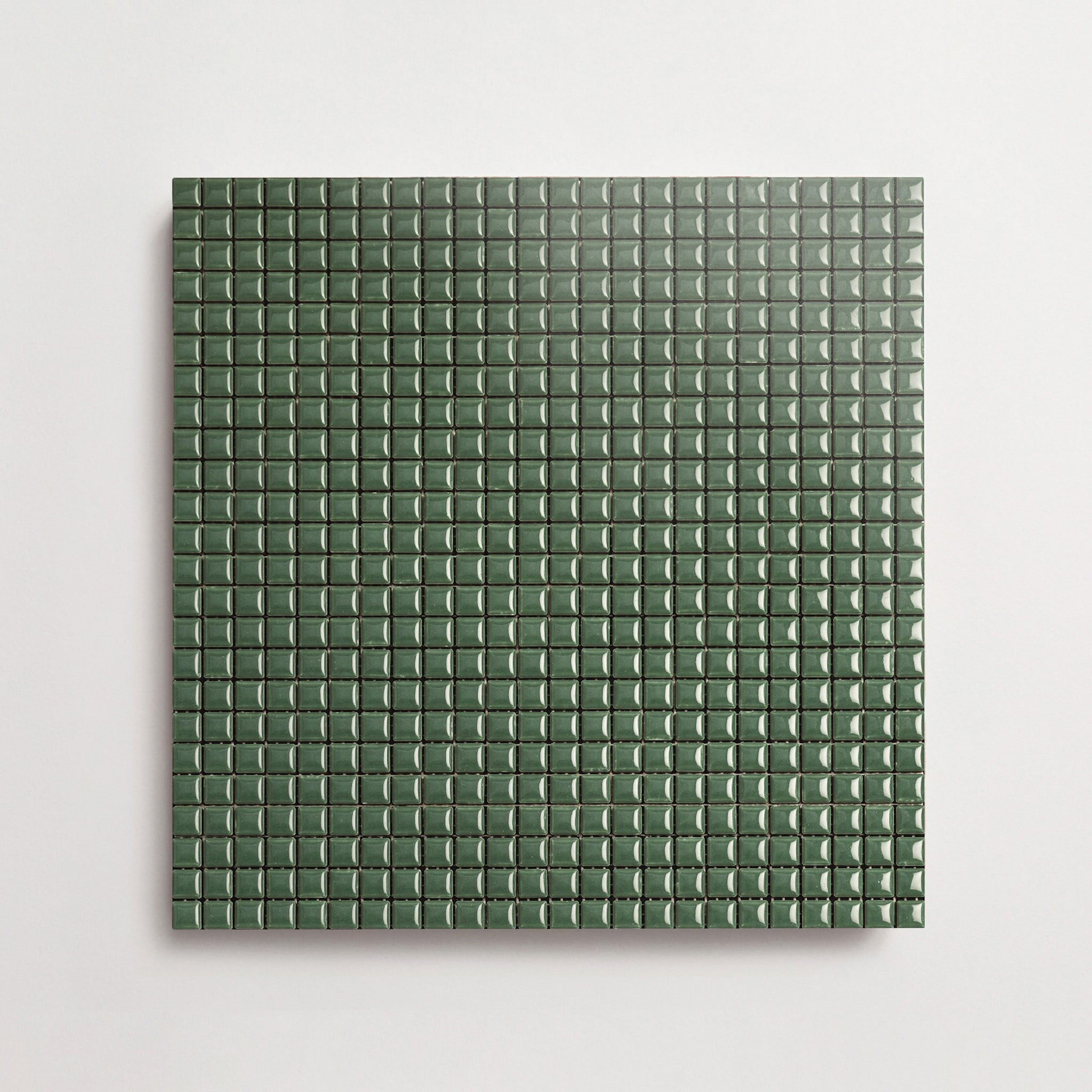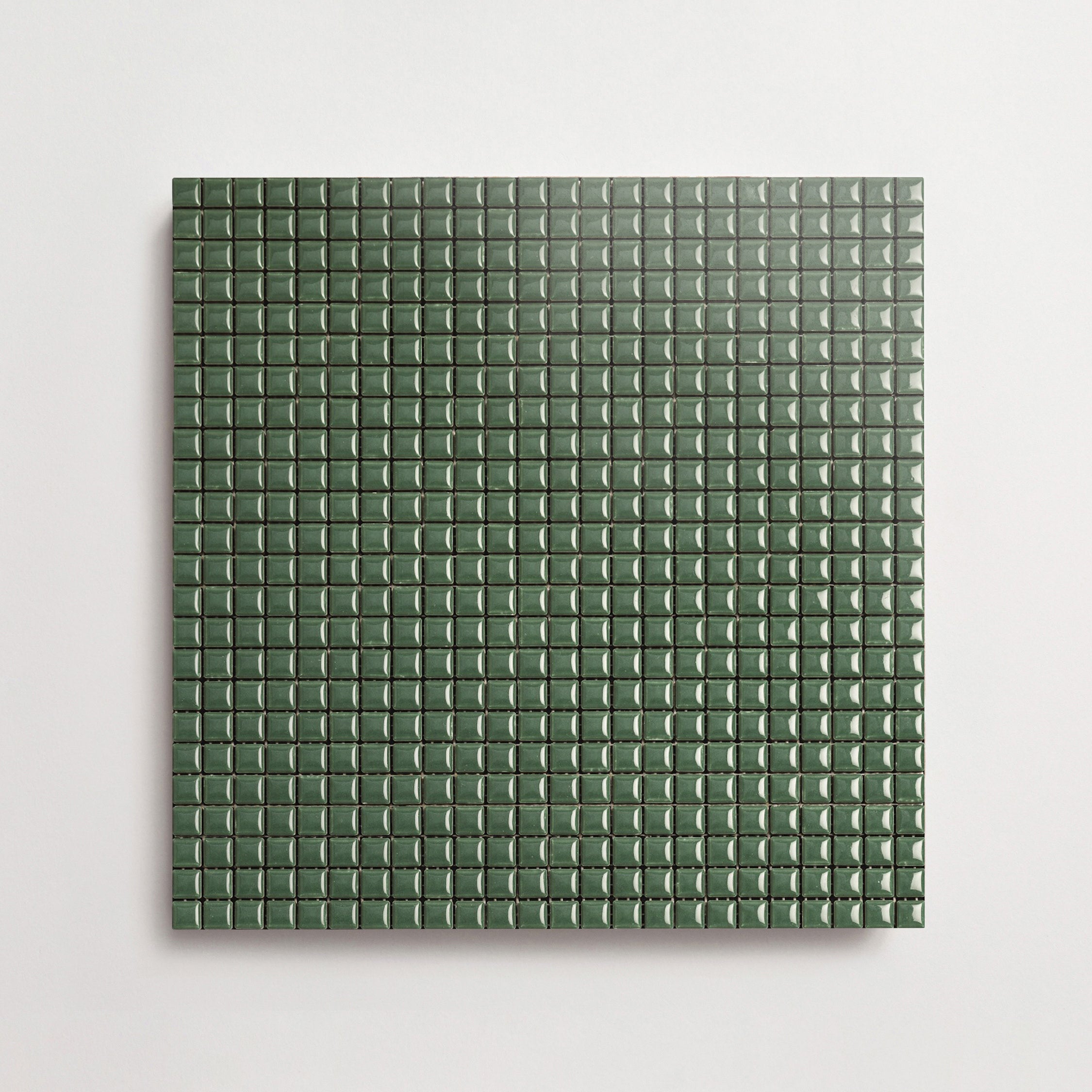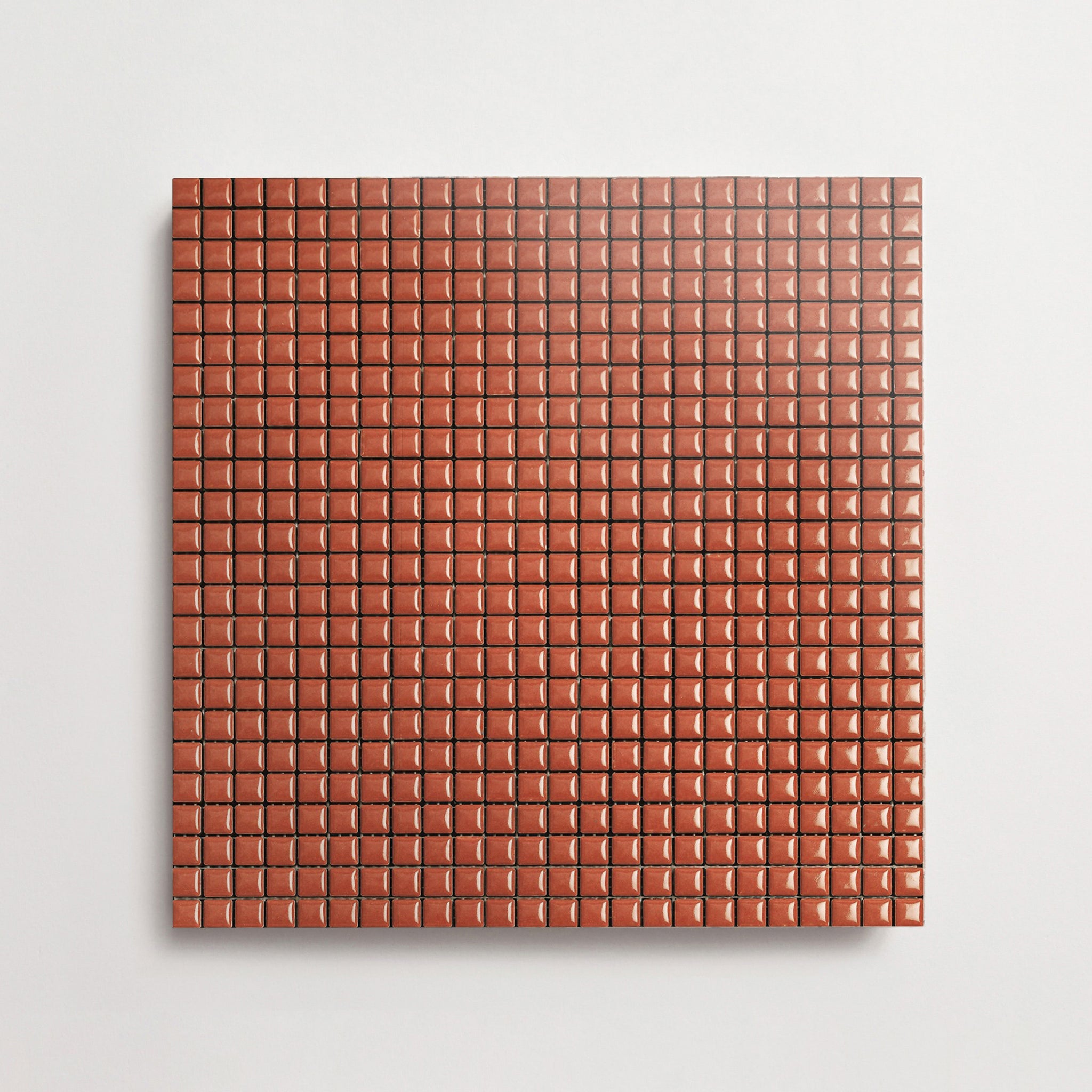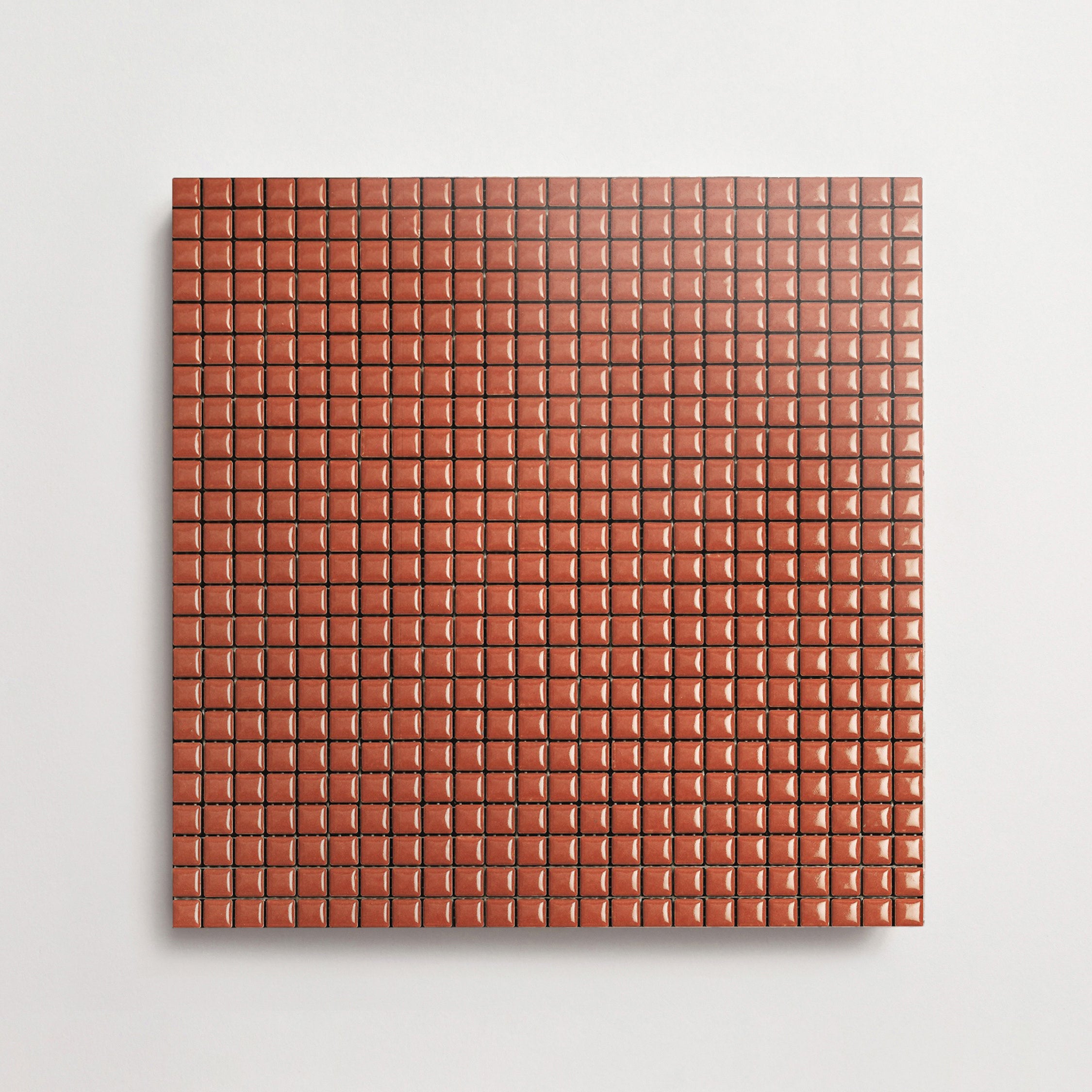your shopping cart is empty.

Colorwerks: Alegria, 4x8” Mason, Cobalt Cloche, Gloss + Colorwerks: Alegria, 2x2” Pixies, Not Quite White, Matte
Outdoor Porcelain Tile Ideas: Pros, Cons & Refined Alternatives
When designing outdoor spaces, selecting the right materials is crucial for achieving a balance of beauty, durability, and functionality. Outdoor porcelain tiles have become a popular choice among contractors, designers, and clients for their versatility and resilience. In this article, we’re exploring inspiring ideas for outdoor porcelain tile applications, the pros and cons of using porcelain tiles, and even exploring porcelain alternatives for certain projects.
Explore our curated outdoor tile collections to find the perfect foundation for your design vision.
12 Elevated Outdoor Porcelain Tile Ideas
Outdoor porcelain tiles bring a sleek and sophisticated touch to any space. Here are some creative ways to incorporate them into your patio and porch projects, from outdoor floor tiles to accent walls.
1. Large-Format Tiles for Modern Minimalist Patios
Large-format porcelain creates a calm, expansive canvas that visually enlarges tight patios. With minimal grout lines and precise edges, these tiles offer a seamless, contemporary look that pairs well with simple furniture and linear landscaping. Choose frost-rated, low-absorption porcelain patio tiles for durability in varied climates.
2. Geometric Patterns to Add Depth and Movement
Porcelain is a top choice for tiled pool areas and other outdoor spaces due to its ability to add depth and movement. This is especially true when you specify hex tiles or have rectangular tiles laid in a dynamic herringbone pattern. To add even more drama to the space, integrate contrasting grout lines.
3. Checkerboard Layouts for Classic Outdoor Charm
A checkerboard layout adds timeless rhythm to terraces and courtyard-style patios. Alternate light and dark porcelain squares for a bold and graphic plane that reads well from windows and balconies. Use slightly textured finishes to maintain traction and choose larger squares outdoors to avoid overly busy joints.
4. Monochrome Schemes That Let Nature Shine
Monochrome palettes — soft greys, warm beiges, and deep charcoals, for example — create a neutral backdrop that accentuates plantings and outdoor furniture. These uniform tones also reduce visual clutter, letting greenery, water features, and textiles become focal points. For barefoot comfort, pick softly textured finishes that stay cool and inviting underfoot.
5. Textured Porcelain for Rustic Garden Paths
Create a harmonious connection between the outdoor space and its natural surroundings with porcelain tiles in textured finishes. Earth-toned tiles are particularly effective in crafting garden paths and courtyards that blend seamlessly with greenery. Pair these tiles with soft lighting and plant borders to enhance the tranquil, nature-inspired ambiance.
6. Mosaics to Define Intimate Outdoor Zones
Make a space feel more intimate with smaller-scale mosaic porcelain tiles. Opt for neutral tones like greys or beiges for a seamless look — or, for a bolder statement, consider brightly colored tiles in shades of red, yellow, blue, or green (be it for the patio flooring or walls). Pair these tiles with sleek outdoor furniture for a contemporary finish.
7. Porcelain Tiles That Mimic Natural Stone
Porcelain shades that mimic the colors of marble, limestone, and slate nod to the elegance of stone while offering lower porosity and easier maintenance. Select high-quality tiles for color stability, and pair the tiles with complementary grout tones to enhance the artisan, stone-like effect.
8. Seamless Indoor-Outdoor Flooring Extensions
Extending the same porcelain from interior to exterior blurs thresholds and enlarges living space. Match tile thickness, finish, and slip rating for safety, and use transition trims where necessary. This strategy amplifies sight lines, supports continuity in the material story, and allows furniture and decor to move freely between, say, a living room and an outdoor deck.
9. Contrasting Borders to Frame Patio Areas
A contrasting border, such as confetti tiles around a field of larger tiles, defines zones without walls. Borders create a finished, tailored look and guide circulation for dining or lounging areas. Use durable, frost-rated tiles for the frame and slightly textured surfaces to emphasize the contrast while maintaining safety near edges.
10. Subtle Tones for Elevated Poolside Tranquility
Soft, muted porcelain tones like sandy beiges, pale greys, and cool ivories promote a spa-like calm at pool edges. Opt for low-gloss, textured finishes, as these non-slip tile options protect bare feet. Cooler tones reduce glare on sunny days and keep surfaces comfortable to walk on.
11. Matte-Finish Porcelain for a Natural Look
Matte porcelain reads as understated and tactile, offering almost a honed-stone feel that resists visible water spots and light scratches. It’s an especially great option for rustic or contemporary schemes, and even porcelain outdoor countertops. Pair matte surfaces with plush furnishings for added comfort.
12. Porcelain with Slip-Resistant Surfaces for Entryways
Entryways and tiled stairs demand confident footing. Choose porcelain tiles that are rated for wet areas. (Matte grip finishes maintain traction without looking industrial.) Also, keep joint widths moderate to prevent trip hazards. Using a slightly darker tone for the entry plane can hide tracked dirt while respecting the home’s exterior palette.
Pros & Cons of Using Porcelain Tile Outdoors
You can use ceramic tile outdoors — especially when that tile is porcelain. Porcelain tiles are highly regarded for their practical advantages, thanks to how they are made. Each tile is crafted from highly refined clay and then fired at extremely high temperatures, often exceeding 2,300°F. This process creates a tile that is incredibly dense, non-porous, and durable.
Still, there are a few limitations to consider (depending on where you source your tile, of course).
Key Benefits: Durability, Weather Resistance, Low Maintenance
Porcelain tiles are engineered to withstand heavy foot traffic and the test of time. Their dense composition ensures resistance to wear and tear, making them an ideal choice for both residential and commercial outdoor projects.
Outdoor porcelain tiles also perform exceptionally well in freeze-thaw environments. This is because they are resistant to water absorption, minimizing the risk of cracking due to temperature fluctuations and freezing water. Additionally, porcelain tiles have impressive UV resistance. This prevents color fading, even in areas with intense sunlight exposure.
Then you have porcelain’s low-maintenance nature. These tiles are easy to clean and do not require sealing (save for the grout) unlike natural stone, cement, and terrazzo. Routine maintenance for porcelain tile involves simple sweeping and occasional washing with mild detergent (great information to pass along to clients).
Also worth noting: Unlike other materials like natural stone, concrete pavers, and cement, porcelain is less likely to develop a patina over time, ensuring a lasting impression that looks consistent through the years.
Limitations: Surface Uniformity, Slipperiness & Installation Risks
For some clients, the consistent appearance of porcelain tiles may lack the character and charm of natural materials like travertine, terracotta, and cement. Of course, this is mainly a personal preference. Advancements in porcelain tile manufacturing have opened up a whole world of more diverse designs, including tiles of all shapes, sizes, and finishes.
In addition, not all finishes are slip resistant. As with any type of outdoor tile, choosing matte and matte grip finishes over glossy ones ensures any flooring will have sufficient traction in high-traffic areas. You might also opt for a smaller tile, such as one that is 2 inches by 2 inches in size, for additional grouting.
Finally, despite their durability, outdoor porcelain tiles can crack under certain conditions, such as when improperly installed. Partnering with an experienced contractor who understands how to prepare a surface for installation can minimize this concern.
Refined Alternatives to Porcelain for Outdoor Use
Of course, porcelain is not the only durable tile option for outdoor use. Stoneware, terracotta, and cement are three more tried and true materials.
Why Stoneware Offers a More Artisanal Aesthetic
While porcelain tiles are an excellent choice for many outdoor tile projects, you may be looking to expand your options that much further. If porcelain tile simply does not offer the look you’re going for, stoneware can be a sophisticated option. Stoneware tiles, like porcelain, are designed to withstand the challenges of freeze-thaw cycles. Both materials are crafted to endure outdoor climates, but their compositions and production methods differ slightly.
Porcelain tiles are made from refined clay that is fired at extremely high temperatures, creating a dense, non-porous surface. In contrast, stoneware tiles are produced using a coarser clay blend and fired at slightly lower temperatures, which can give them a more rustic appearance while maintaining many similar benefits in terms of durability.
Stoneware tiles are also often handcrafted, lending an artisanal touch that appeals to clients seeking a more distinctive design. This quality makes stoneware a desirable choice for bespoke outdoor spaces, such as high-end courtyards and patios where individuality is paramount.
Of course, there are other types of tile that can offer more of a perfectly imperfect look. Brick, cement, and terrazzo are three classic examples.
When to Choose Terracotta or Cement for Design Depth
Similarly, terracotta and cement bring instant depth and artisanal character to an outdoor space.
Terracotta’s warm, earthen tones and slightly textured surface feel inviting underfoot. This makes it ideal for Mediterranean, desert, or covered patios where freeze-thaw stress is minimal. Because true terracotta is porous, always specify frost-rated options for cold climates. In addition, your client should plan for regular sealing to prevent staining and water damage.
Then you have cement tiles, which brings bold and hand-crafted color to patios, pool decks, and beyond. These tiles read as highly decorative — perfect for defining dining terraces or entry thresholds — but they are porous and benefit from careful cleaning. As with terracotta, cement needs ongoing regular sealing.
In general, you should always match the material to the climate and intended wear to preserve the handmade appeal.
Conclusion
Outdoor porcelain tiles make for a versatile and reliable flooring for an outdoor patio, pool area, or garden path. Their durability, weather resistance, and low-maintenance requirements make them a standout option for outdoor spaces. While stoneware, terracotta, and cement tiles offer artisanal charm and refined alternatives, porcelain remains the cornerstone of modern outdoor tile design.
Whether you’re a contractor, designer, or tile installation client yourself, understanding the strengths and limitations of each material can help you create an outdoor space that is both functional and visually stunning.
Ready to elevate your exterior design? Browse our exclusive outdoor collections today.
-
Fairy Floss
-
Lido
:
-
Soie
-
Feather Boa
-
Lido
:
-
Soie
-
Fiery
-
Lido
:
-
Soie








